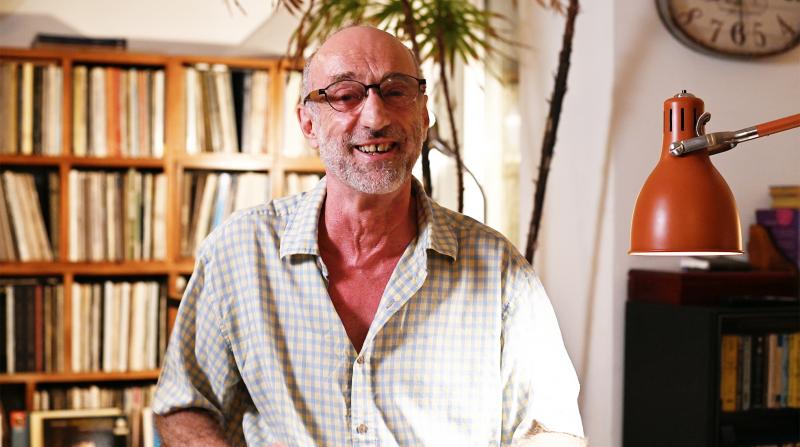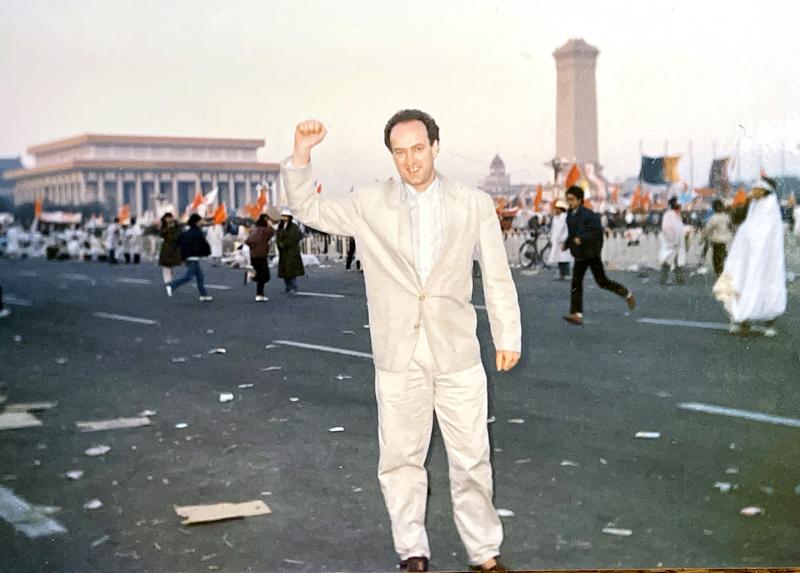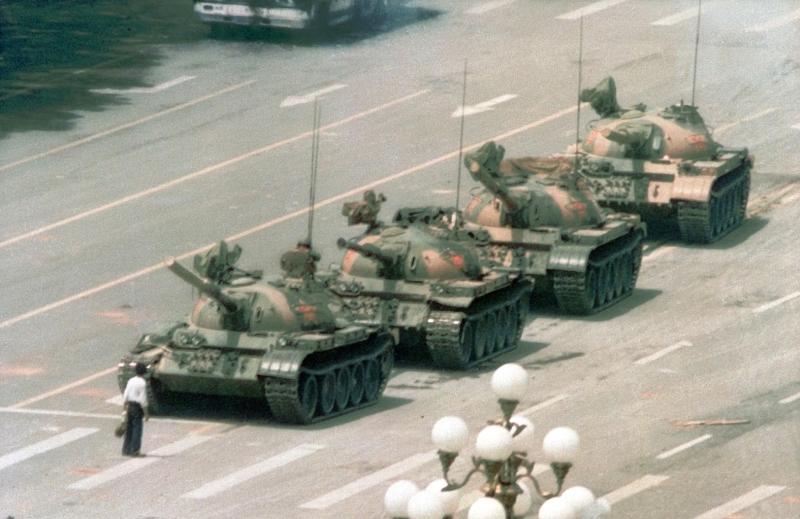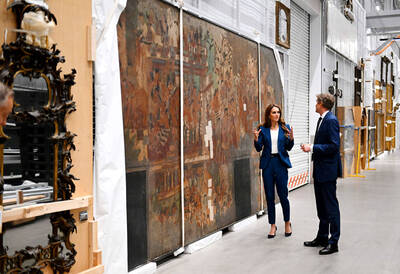The international community of China human rights watchers lost a legendary figure last month with the passing of Robin Munro, who was one of the key Western observers of the 1989 Tiananmen student protests in Beijing. He died on May 19 in Taipei at age 67.
Tributes have poured forth from ranking journalists and top figures at Amnesty International, Human Rights Watch, China Labor Bulletin and London’s School of Oriental & African Studies (SOAS), calling Munro a “legend,” who set the “gold standard” for human rights documentation in the post-Tiananmen era.
“Munro was [Human Rights Watch’s] first researcher on China. He was the last known Westerner to leave Tiananmen Square. He did pathbreaking work on China’s horrible orphanages and on labor rights,” tweeted Kenneth Roth, executive director of Human Rights Watch.

Photo: David Frazier
“Robin helped many Chinese dissidents, who might otherwise have died in prison, to gain their freedom. I was one of them,” wrote Tiananmen democracy activist Han Dongfang (韓東方).
“His work on China human rights issues was hugely important,” tweeted Bloomberg reporter Benjamin Robertson.
HUMAN RIGHTS ABUSES IN CHINA

Photo: Bloomberg
Over the last three decades, Munro authored groundbreaking reports on China’s organ harvesting, abuses in orphanages, psychological torture of political prisoners and early rights abuses in Xinjiang.
Munro came into the human rights field when China was largely sealed off to the West and its human rights issues were little understood. He began his career in 1979 with Amnesty International in London, then in 1987 moved over to Human Rights Watch in New York. In early 1989, Human Rights Watch sent him to Hong Kong as its first dedicated China researcher and office director.
Within months of the posting to Hong Kong, student demonstrations erupted in Beijing’s Tiananmen Square, and Munro traveled north to witness them first hand. He is acknowledged as the last Western observer to leave the square early on the morning of June 4, 1989, staying on to witness the arrival of the People’s Liberation Army. Munro’s documentation of that event, and interviews he gave on Western TV news programs, became crucial to the world’s understanding of what was happening on the ground.

Photo courtesy of Huang Pao-lien
A recent obituary from SOAS observed that Munro’s “account made the important point that it was not in fact students who were massacred in the Square, but rather the citizens of Beijing — the laobaixing (老百姓) — who were supporting the students in the streets outside the Square and were slaughtered there.”
In 1990, on Tiananmen’s first anniversary, Munro explained in an article in the US magazine The Nation, “A massacre did take place — but not in Tiananmen Square, and not predominantly of students. The great majority of those who died… were workers, or laobaixing (“common folk” or “old hundred names”), and they died mainly on the approach roads in western Beijing.”
Later in the article he explained that the reason these common citizens were “mercilessly punished [was] in order to eradicate organized popular unrest for a generation.”

Photo: AP
“Journalism may be only the rough draft of history,” wrote Munro, “but if left uncorrected it can forever distort the future course of events.”
“I think that a key part of Robin’s success as an activist was his sense of responsibility, as a scholar, to the truth as supported by evidence. Despite his passion... he never exaggerated,” observed Donald Clarke, a specialist in Chinese law at George Washington University and one of Munro’s closest personal friends.
MAN OF THE PEOPLE
Robin Munro was born in London on June 1, 1952. At the age of six, he moved with his family to Scotland, where his father was a lecturer at the Veterinary School of Glasgow University.
His mother’s line included three generations of missionaries in China, going back to the 1800s. His own mother was born in 1918 in Swatow, China — present day Shantou, Guangdong Province — but as political upheaval swept China in the 1920s, the family returned to Edinburgh in 1925.
Munro began his studies at Edinburgh University in 1969, but dropped out for some time to live in a hippie commune on the Balearic island of Formentera, just next to Ibiza. In Scotland, he also drove a public bus, an item he kept on his CV for years as a nod to his labor credentials. When he returned to school in 1974, he changed his academic tack and began studying Chinese.
He traveled to China for the first time as a visiting student from 1977 to 1979, a period which perfectly straddled the end of the Cultural Revolution. In his first year at Peking University, his classmates and roommates were workers, peasants and soldiers assigned to the university by the Communist Party, while in his second year he studied with intellectuals returning from rural communes, who had been sent down by Chairman Mao Zedong (毛澤東).
In the decade following the Tiananmen massacre, Munro helped numerous fleeing Chinese dissidents attain asylum in the West.
He also “did pathbreaking research” — published as reports and books — “on China’s psychiatric abuse of political prisoners, abuses in orphanages and organ harvesting of convicts. He also broke new ground reporting on Inner Mongolia, the laogai (勞改, “reform through labor”) detention system in Xinjiang and repression of Catholics in Hebei province,” according to a statement by Human Rights Watch.
“All of these works constituted the first serious and scholarly examination of the problems they addressed,” wrote Clarke.
One of the Chinese dissidents Munro helped, Li Jinjin (李進進), tweeted, “It shocked me, the sad news that my friend Robin [is] gone. He met me after I was released from Qincheng Jail in Beijing in…1991. He helped me come to the United States in…1993.”
PLIGHT OF ACTIVISTS
Munro chronicled the plight of Li and other activists in the 1993 book Black Hands of Beijing, which he co-authored with George Black.
Another dissident assisted by Munro was one of the founders of the Beijing Workers’ Autonomous Federation, the aforementioned Han Dongfeng, whom Munro became friends with through frequent visits to the workers encampment in Tiananmen Square.
Following the 1989 crackdown, Han was imprisoned for two years and placed in a cell with tuberculosis sufferers. Han eventually lost a lung to the disease and might have died had Munro not lobbied for his release and helped arrange medical treatment.
In 1994, Han had settled in Hong Kong and there founded an NGO, China Labor Bulletin advocating for labor rights in China. Munro began working with him at the organization a decade later in 2003.
“Robin worked tirelessly over the past two decades to provide legal assistance for tens of thousands of Chinese workers seeking justice through the court system,” Han wrote in a recent tribute.
“Many of them had suffered terrible work injuries, contracted occupational diseases or were desperate to get the back pay owed for months, even years, of hard labor. Many workers faced imprisonment for defending their legal rights. These workers and their families should know that it was this Scotsman, Robin Munro, who helped them obtain justice.”
In 2004, Munro married the Taiwanese writer Huang Pao-lien (黃寶蓮), today a well-known author of 16 books of fiction and non-fiction.
PERSONAL CONNECTION
In 2011, the couple moved from Hong Kong to Taipei, after Munro was set upon by medical issues. For a decade, he managed to beat his illness, living happily in semi-retirement on the slopes of Yangmingshan, north of Taipei.
I met him there last year, where he helped me make a digital recording of old analogue audio tape, using one of his vintage reel-to-reel tape players.
Munro was a high-end audiophile, who spoke gleefully of his German hand-crafted turntable arm, his 1950s French amplifier and his unbelievable music collection, which included some of the first ever stereo recordings on analogue tape. I now regret that I never had the chance to return so that he could play them for me — he had of course made the generous offer, and spoke with vast and marvelous knowledge on the nuances of high fidelity.
Munro was taken by a sudden illness in April and died on May 19 at Taipei Veterans Memorial Hospital. He is survived by his sister Sandra and wife Huang Pao-lien, who was by his side to the last.
Munro influenced an entire generation of human rights workers in Asia, and recent numerous tributes acknowledge this legacy.
Their sentiments are best summed up in the eulogy of his longtime friend, Donald Clarke: “For many in the human rights community, his passing marks the loss of a giant figure. For his wife, sister and friends, it marks the loss of a part of themselves. For everyone, his life is a reminder of what matters in this world. In Shakespeare’s words, ‘His life was gentle, and the elements mixed so well in him that Nature might stand up and say to all the world, This was a man.’”

June 9 to June 15 A photo of two men riding trendy high-wheel Penny-Farthing bicycles past a Qing Dynasty gate aptly captures the essence of Taipei in 1897 — a newly colonized city on the cusp of great change. The Japanese began making significant modifications to the cityscape in 1899, tearing down Qing-era structures, widening boulevards and installing Western-style infrastructure and buildings. The photographer, Minosuke Imamura, only spent a year in Taiwan as a cartographer for the governor-general’s office, but he left behind a treasure trove of 130 images showing life at the onset of Japanese rule, spanning July 1897 to

One of the most important gripes that Taiwanese have about the Democratic Progressive Party (DPP) is that it has failed to deliver concretely on higher wages, housing prices and other bread-and-butter issues. The parallel complaint is that the DPP cares only about glamor issues, such as removing markers of Chinese Nationalist Party (KMT) colonialism by renaming them, or what the KMT codes as “de-Sinification.” Once again, as a critical election looms, the DPP is presenting evidence for that charge. The KMT was quick to jump on the recent proposal of the Ministry of the Interior (MOI) to rename roads that symbolize

On the evening of June 1, Control Yuan Secretary-General Lee Chun-yi (李俊俋) apologized and resigned in disgrace. His crime was instructing his driver to use a Control Yuan vehicle to transport his dog to a pet grooming salon. The Control Yuan is the government branch that investigates, audits and impeaches government officials for, among other things, misuse of government funds, so his misuse of a government vehicle was highly inappropriate. If this story were told to anyone living in the golden era of swaggering gangsters, flashy nouveau riche businessmen, and corrupt “black gold” politics of the 1980s and 1990s, they would have laughed.

Imagine being able to visit a museum and examine up close thousand-year-old pottery, revel alone in jewelry from centuries past, or peer inside a Versace bag. Now London’s V&A has launched a revolutionary new exhibition space, where visitors can choose from some 250,000 objects, order something they want to spend time looking at and have it delivered to a room for a private viewing. Most museums have thousands of precious and historic items hidden away in their stores, which the public never gets to see or enjoy. But the V&A Storehouse, which opened on May 31 in a converted warehouse, has come up